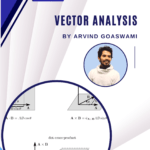Light is one of the essential and basic needs for all of us. Light always remains the center of the thinking of scientists. The dual nature of light truly brings a revolution to science, and from time to time different claims of scientists keep coming forward. One of these few claims is “converting light into the matter”. However, how right or wrong these claims are depends on the results of their experiments and the future outcome.
Just think, if this was possible then it would be the beginning of a new era in physics, then perhaps our imaginations would take the form of a reality and the way of looking at science would change completely.
Through this post, we are going to present before you all the points of this claim, as well as we will also look at some theories which include Einstein’s mass-energy equation, and some basic properties of light.
You may like-Exploring the Celestial Splendor: NASA Hubble’s Spectacular Holiday Globe of Stars
Mass-Energy Equation
The basis of the bets made in this entire experiment is the mass-energy equation which was given by Einstein in 1905. Although many scientists have discussed it before, the credit for the mass-energy equation goes only to Einstein.
According to Einstein – “The mass of any object is a fundamental property of matter which is present in every substance in the universe. And the ability to do work with the same substance is called energy.
Before Einstein, mass and energy were considered as two separate independent quantities, and on this basis, two independent physical laws of mass conservation and energy conservation were made.
Whereas Einstein proved that these two independent physical laws are not different but are the same. That is, both mass and energy are equivalent to each other and their conversion is also possible.
so Mass-energy equation –
E=mc^2
It is known from this equation that the speed of light (c=3.0 x 108 meters/second) has a special contribution to this entire process.
What is the claim?
Scientists have devised an experiment aimed at transforming light into matter, serving as a tangible illustration of Einstein’s iconic equation E = mc2. In their simulations to explore practical applications of this globally renowned equation, physicists propose spinning plasma to collide with photons, resulting in the generation of matter.
Einstein’s equation, E = mc2, takes center stage here, elucidating the connection between energy and mass. Specifically, it posits that energy and mass are interchangeable, with mass being multiplied by the square of the speed of light.
A team, led by researchers from Osaka University and UC San Diego, recently conducted a laser-based emulation of photon collisions. Their findings suggest that these collisions could yield pairs of electrons and positrons. The laser’s electric field can rapidly generate positron radiation, the antiparticle counterpart to electrons.
The researchers are confident that their proposal is experimentally feasible and holds relevance for a practical understanding of the physical world. According to a statement from Osaka University, physicist and co-author Alexey Arefiev from UC San Diego stated, “We believe our proposal is experimentally feasible, and we are eager to explore the workings of the real world.”
The statement emphasizes that the current laser intensity in experimental setups is sufficient. Through simulations, researchers tested a potential experimental setup and identified a promising configuration using the Breit-Wheeler process to produce photon-photon collider material. This process entails annihilating gamma rays to create electron-positron pairs.
In the far reaches of the universe, there are extreme physical locations where stars are born and die, and time remains stable. In 2021, another research team suggested that neutron star cores, the exceedingly dense final stages of stellar life, might serve as a site for a homogeneous equilibrium, potentially transforming dark matter particles into photons.
Rotating neutron stars, known as pulsars, could be environments where matter is produced from light, according to NASA. Pulsars, which can rotate thousands of times per second, emit gamma rays and possess the strongest known magnetic fields.
Pulsars also prove valuable for measuring gravitational waves in space. Earlier this year, five different pulsar timing arrays collaborated to confirm the existence of a suspected gravitational wave background—essentially, the continuous hum of gravitational waves resonating at nearly imperceptible levels in space-time.
While observing the interior of a pulsar from a distance poses challenges, physicists can attempt to emulate it. Vyacheslav Lukin, program director at the National Science Foundation, which supports recent research, commented, “This research shows a possible way to uncover the mysteries of the universe in a laboratory setting.”
The experiment holds the potential to bring certain aspects of astrophysics closer to home, offering a means to explore the structure of the universe. However, to achieve this, a real experiment will be necessary.
You may like-Decoding the Cosmic Enigma: Unveiling the Birthplaces of Stars in the Whirlpool Galaxy












